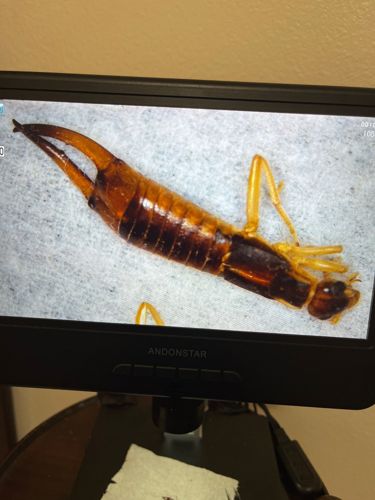Earwig
Scientific Name: Forficula auricularia (common European earwig, likely species based on appearance)
Order & Family: Order: Dermaptera, Family: Forficulidae (for common European earwig)
Size: Typically 5-25 mm (0.2-1 inch) in length, varying by species. The pincers (forceps) at the end of the abdomen are a distinctive feature.

Natural Habitat
Earwigs prefer moist, dark environments. They are commonly found under rocks, logs, leaf litter, mulch, and in damp crevices. Indoors, they may be found in basements, bathrooms, and laundry rooms.
Diet & Feeding
Earwigs are omnivorous, feeding on a wide variety of things including decaying organic matter, molds, fungi, plants (leaves, flowers, fruits), and small insects or their larvae.
Behavior Patterns
Earwigs are nocturnal insects, hiding in dark, moist places during the day and becoming active at night to feed. They are known for their maternal care, with females guarding their eggs and newly hatched nymphs. They can be found indoors when conditions outside are too dry or too wet.
Risks & Benefits
Earwigs are generally harmless to humans, though their pincers can deliver a slight pinch if handled, which is not medically significant. They are often considered a nuisance pest when they enter homes or damage garden plants. In the garden, they can be beneficial as predators of other small insects and pests but can also be detrimental by feeding on cultivated plants and fruits.
Identified on: 9/4/2025